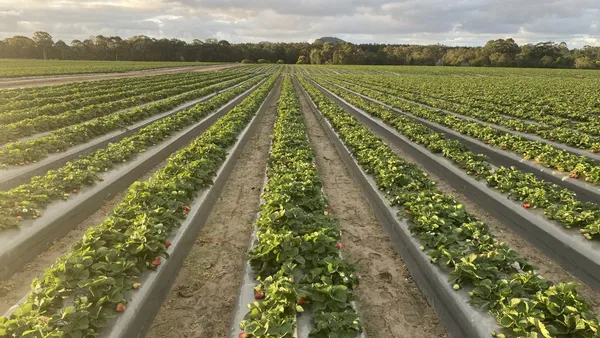Berries Australia is encouraging growers to consider the potential surrounding export as the industry grows, noting that working together to ensure overseas markets are open and supplied will create more opportunities.
Export Manager Jenny Van de Meeberg told the recent BerryQuest that industry sustainability is dependent on the domestic market and export market remaining in equilibrium, so supply has to meet demand.
"If those two things are out of balance, and there is oversupply, we would see downward pressure on prices," she said. "So, export is important because it is in the interest of all growers. Everyone benefits from fruit leaving the domestic market, and the equilibrium is maintained. Export is the other way that you achieve industry growth. To meaningfully grow the volume and the value of the industry, we have to find export markets that can take good volumes of fruit at commercially sustainable prices, particularly in the peak windows. Our objective is to encourage more fruit into export supply chains; it is not to turn every grower into an exporter. That is an important distinction because you don't have to be responsible for all the export functions, it is about the business model that you choose. Your fruit might be export compliant, but the heavy lifting of actually exporting it is then done by another party."
According to Hort Innovation's Australian Horticulture Statistics Handbook, for the year ending June 2021, the volume of Australian fresh berry exports was 3,933 tonnes, and it was valued at $34million. Strawberries made up 3,578 tonnes (worth $25.5million), blueberries made up 342 tonnes ($8.4million), and Rubus berries (raspberries, blackberries, and other berries such as boysenberries and silvanberries) made up 13 tonnes and $200,000.
She added that Berries Australia had secured a range of funding sources to support the activities that they are undertaking on the growers' behalf.
"There is a significant levy investment project, which is funded by the strawberry, blueberry, and Rubus levies collectively," Ms. Van de Meeberg said. "That has a three-year horizon, and a project reference group comprised of growers is guiding what we do in those activities. We have also been successful in securing grants from the Department of Agriculture to fund the activities, and we have also developed partnerships with the Australian Trade and Investment Commission (Austrade), who have been delivering services in-market to assist growers who want to export directly."
Berries Australia has also written up action plans to assist with the direction of export growth. Ms. Van de Meeberg explains that it is a focused 18-month plan that is targeted at the shorter term and what steps to take next. There is also an export hub available to growers on the industry's website, which provides information on new market access, and trade development, as well as a dashboard with regular trade data and market insights in certain countries. Growers can also take part in an export education course that is all online and broken up into modules.
"If you are a large business that is already experienced in export, you may want to consider using it as an induction tool when you are bringing others into your team," she said. "But the export hub is a password-protected area of the site because we don't want to put a lot of the information in the public domain, but we want our growers to be able to utilize it. We will continue to put more resources in that location so that the industry has a single source of truth when it comes to looking for export support."
 Photos: File, supplied by Berries Australia
Photos: File, supplied by Berries Australia
Importers and buyers from other have also been contacting Berries Australia through an export inquiry function, where they signal their interest in buying products from Australia. With the support of Austrade, the industry has also been involved in international tradeshows and lobbied the issue of market access and opening new pathways.
"We have lodged a number of applications on that front," Ms. Van de Meeberg said. "With blueberries, we have sought new access to Vietnam, South Korea, Taiwan, and New Zealand. I am pleased to say that blueberries are the active negotiating priority with Vietnam at the moment, so we hope to see activity within the next few years. In terms of strawberries, we have successfully seen a pathway for irradiation to New Zealand, and we have requested the same for Thailand. While market access research and development packages are important because it is the body of work that we need to make these market access applications. So, we have embarked on a number of projects to do the R&D that we need so blueberries and strawberries can put forward more market requests."
For more information
Jenny Van de Meeberg
Berries Australia
Phone: +61 410 536 269
[email protected]
www.berries.net.au
